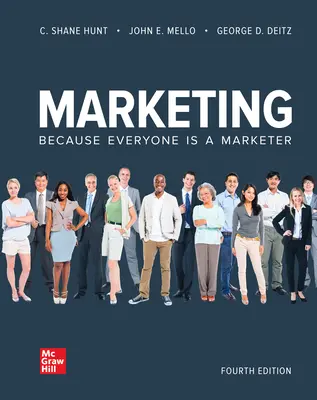Posted by admin on Oct 14, 2015
Burger King marketers face a significant challenge. McDonald’s remains the world’s largest restaurant company, and its sheer size has pushed Burger King to take marketing risks to stay competitive. In 2014, McDonald’s had roughly five times Burger King’s ad budget, with money for Super Bowl ads and sponsorships of the FIFA World Cup and the U.S. Olympic team. However, the budget size advantage doesn’t go as far as it used to because of social media. If marketers can utilize social media as part of their marketing plan, it can generate more buzz than paid media. Burger King likes being edgy and it has proved that it doesn’t mind doing things that might make other brands blush. In 2015, as the company pushed a new spicy version of its chicken fries it tweeted a picture of what appeared to be a stack of adult magazines. The magazines, their cover images blurred, were set next to a box of Fiery Chicken Fries, and the tweet read: “Hotter than your summer reading list. #fierychickenfries.” Less than a week later, a similar tweet featured blurred-out images of bikini-clad women with this message: “Hotter than your browsing history.” In an age when office chatter has moved from last night’s TV episode to the latest viral video, part of Burger King’s marketing advantage has been its willingness to move quickly to exploit a constantly churning Internet news cycle. After the company reentered France in 2013, following a 16-year absence, social media there were besieged with negative comments from French customers complaining about long lines at the restaurants. Burger King didn’t waver in the face of the apparent customer service crisis. Instead, it printed some of the “angry tweets” on construction panels at the new locations as proof it had heard the negative feedback. That gambit generated millions of retweets, won a marketing award, and again showed Burger King to be a brand that isn’t afraid to ignore conventional wisdom. In June 2014, Burger King’s chief financial officer, said the company would rely more heavily on data to make sure its marketing was cost-effective and reaching the right customers, and was “shifting channels toward more digital and social media.” The huge ad budget differential is one reason Burger King is likely to continue rolling out marketing stunts such as its open letter to McDonald’s in August 2015, asking its longtime rival to help it create a hybrid...
Read More
Posted by admin on Sep 18, 2015
This week I gave my first exam in my Principles of Marketing class. I was very pleased by the results and even more pleased by my discussions with a couple of students regarding SmartBook. SmartBook is the first and only adaptive reading experience designed to change the way students read and learn. It creates a personalized reading experience by highlighting the most impactful concepts a student needs to learn at that moment in time. For many of my students, it was their first experience with SmartBook and several commented to me how much it helped them in preparing for the exam. As a student engages with the Hunt Mello SmartBook, the reading experience continuously adapts by highlighting content based on what the student knows and doesn’t know. This ensures that the focus is on the content he or she needs to learn, making my students study experience more efficient and effective. In my Principles course with 80 students from 10 different majors, Smartbook is an amazing partner to me in reaching each of my students where they are at and helping them to develop their marketing knowledge and skills. My average exam scores are up over last year and more importantly, I think my students have a broader and deeper understanding of marketing at this point in the...
Read More
Posted by admin on Sep 1, 2015
When HBO expanded its internet product offerings, it was only a matter of time before it started getting interested in kids. The deal for rights to premiere the next five seasons of Sesame Street on HBO’s cable channel and streaming services, alongside other Sesame Network content produced exclusively for HBO, shows just how important children’s programming has become to anyone who wants to market to and maintain a massive subscriber base in a marketplace being reshaped by cord-cutting behavior. Netflix, Amazon, and other streaming services have gained a lot of attention for HBO-style prestige dramas, such as Orange Is the New Black and Transparent. The aggressive moves by these streaming services into kid-focused programming has received far less attention. Nearly a quarter of television content available on Amazon is children’s programming, according to SNL Kagan data from October 2014, and 17 percent of Netflix shows are likewise aimed at kids. Netflix first started a separate service of children’s programming in 2011, allowing parents to quarantine their kids in a place where they wouldn’t encounter inappropriate material or tilt the service’s recommendation engine toward animated musicals. Netflix in the following year signed a deal that, starting in 2016, will put all of Disney’s first-run movies onto its streaming service after they leave theaters. Next came a pact with DreamWorks Animation to produce 300 hours of new television programs featuring established DreamWorks characters and brand-new franchises. The battle for kids is about keeping their parents around even when a favorite show is on hiatus. Streaming services are far easier to cancel and resubscribe than cable-TV, so the goal for marketers is to make that decision harder. HBO didn’t have to worry much about using kids shows to retain customers until the external marketing environment started to change recently. Cable channels are offered as part of larger bundles of channels and within other services, such as broadband and phone service. Getting rid of your HBO just because the latest season of Game of Thrones ended is, to most subscribers, probably more trouble than it’s worth. But appointment viewing keeps people loyal to only a certain extent. It makes more sense to be all things to all people when your subscription service is an easily eliminated line item in the household budget. Hulu, which unlike Netflix, Amazon, and HBO Now is focused largely on advertising, has also been less active in kids’ shows. The service does include content from Nickelodeon and Cartoon Network and offers a kids-only service that is available solely through its paid tier. But...
Read More
Posted by admin on Aug 14, 2015
I hope everyone had a great summer. I have been busy preparing my Principles of Marketing course for the Fall and I am very happy to share that the new iSeeIt! videos are now available in Connect. iSeeIt! Videos are short, contemporary videos providing an engaging introduction to marketing learning objectives delivered in a fun, animated way. Easy-to-use, iSeeIt! videos can serve as lecture launchers or can be assigned within Connect with auto-graded questions. You can find these 17 videos now available within Connect in two places: 1) To assign: from within Connect, select Add Assignment, select Question Bank, choose a chapter, select Interactive 2) To use as lecture launchers: from within Connect, select Library, instructor resources You can also find a sample of these videos at http://successinhighered.com/marketing/iseeit-videos/ I am excited to use these in my Principles course this semester and I wish all of you a great start to a new school year. ...
Read More
Posted by admin on Jul 31, 2015
When Taco Bell introduced a food-ordering app in October, the chain figured it could speed up service for customers and cut down on wrong orders. What Taco Bell didn’t know was how this might change consumer behavior and how much extra food Americans order when they do so from the privacy of their smartphones. That’s why Taco Bell’s Live Más app, available for its 6,000 U.S. restaurants, has been downloaded more than 3 million times. Customers who use it also spend more than $10 on an average order—about 20 percent more than those who order in person. The app is pretty easy to use for most customers. After storing your credit card information, tap and swipe to select from the menu, then hit “submit.” To ensure the food is hot, the order is filled only when a customer is within 500 feet of a Taco Bell and notifies the store that they will pick up the food inside or at a drive-thru window—the app includes what’s known as a geofence to determine a user’s location. Taco Bell’s same-store sales rose 6 percent in the quarter that ended in March. The app has also reinforced Taco Bell’s standing with young, tech-savvy customers. Other companies are trying to go in this same marketing direction. Starbucks takes an estimated 8 million of them through customers’ phones each week and ordering ahead is available at only about a third of its U.S. locations. McDonald’s and Burger King have lagged behind on mobile ordering. Burger King’s app provides coupons and locations; McDonald’s has said it will release a global app this year but hasn’t said whether it will take orders. Competitors may want to replicate one surprising finding from Taco Bell’s market research. In early surveys by the company, customers reported that the food ordered on a smartphone tasted better. Source: Craig Giammona. “Taco Bell’s App is a Fix for the Munchies” Bloomberg.com, July 9, 2015. Discussion Questions: 1.How does the Live Mas app help Taco Bell’s market positioning? 2.If you were a marketer for Taco Bell, what other features would you include in the app to increase profits and improve the customer...
Read More





